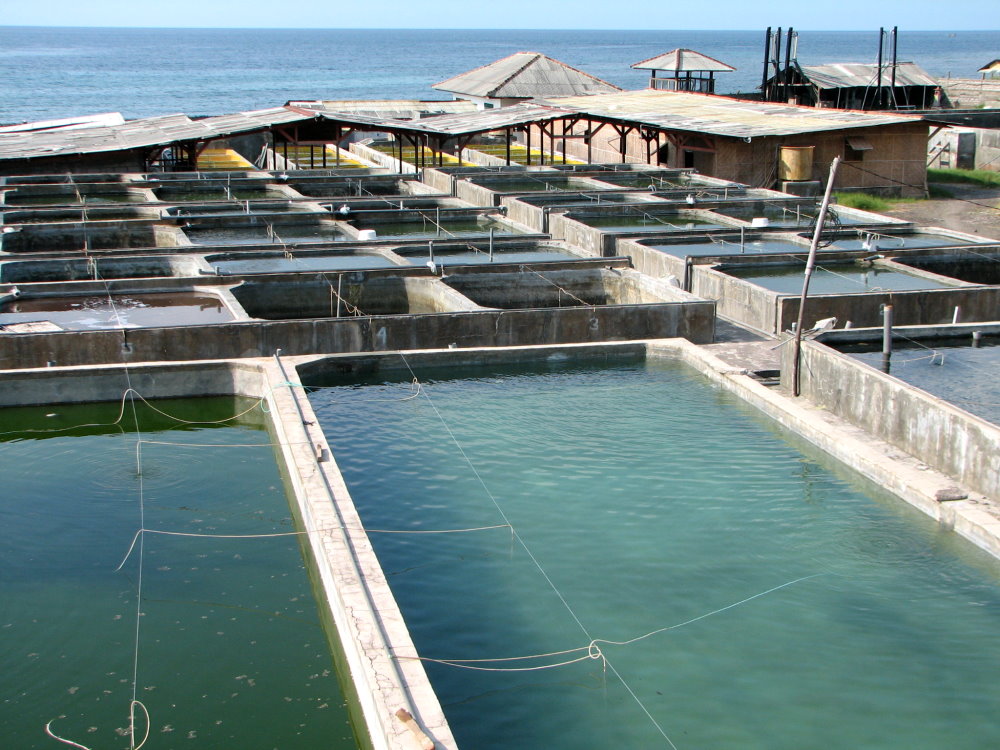First time we heard about Indonesian Pinnatus Batfish, they were rumored to be captive-bred. Then, as time went on, vendors started using “tank-raised” to describe these fish, and by 2010’s marine breeding year-in-review, we were all thinking they were likely tank-raised fish. Well the back and forth mystery of the captive-bred, or is it tank-raised, Pinnatus Batfish (Platax pinnatus), is officially demystified.

Wen-ping Su of Bali Aquarich stepped forward a few weeks ago to clear up all the confusion, and even provided some stunning documentation that back up the claims. The truth is out, as Wen-ping Su wrote, “Presently, all the artificial propagated Pinnatus Batfish, which is exported from Indonesia, is all produced by our facility.” To paraphrase the final answer – they are 100% what we would term CAPTIVE BRED! A recap of Bali Aquarich’s breeding program, and a few new developments, after the break!
Bail Aquarich seems to be a foodfish producer that is branching out into the marine ornamental side of aquaculture, producing marine aquarium fish directly for the trade. Wen-ping Su shared images of the seaside facility with us. This is a great opportunity to see what large-scale commercial aquaculture looks like.



Wen-ping Su told us that Bali Aquarich pursued the breeding of Pinnatus Batfish not because it is a foodfish, but simply because he was impressed with the color and shape of the species when snorkeling. In other words, it’s probably one of his favorite fish, so why not try to breed it? 5 years ago, they purchased wild caught juveniles, suffered heavily losses, reared up many to adulthood, and finally, got the eggs! To the best of their knowledge, Bali Aquarich knows of no documentation or publication of any kind for the captive propagation of batfish. In other words, from where we sit, it would seem that Bali Aquarich may lay claim to be the first to breed the Pinnatus Batfish in captivity.
For a myriad of reasons, we don’t have the whole story. We don’t know what the first foods are, we don’t know the details of spawning, but we assume that the techniques used by marine foodfish hatcheries to breed pelagic-spawning foodfish species like Panther Groupers (Cromileptes altivelis) certainly helped with the learning curve. It is important to point out that we asked Wen-ping Su about the notion that the Pinnatus Batfish were “tank-raised” – collected from the ocean at some point and reared to sell-able size. He was quick to dismiss that notion, saying it would be impossible to collect the larvae in sufficient quantities to be profitable and to reach the quality desired. Egg collection in the wild would be truly impossible. No, the only way to get the quantities they are producing is captive breeding. What follows are probably the first published images of the larval development of Platax pinnatus, courtesy Wen-ping Su & Bali Aquarich.





Of course..those images made this whole process look “easy”, and I can assure you it wasn’t. In addition to the normal difficulties of rearing the offspring of pelagic spawners, Wen-ping Su cited species-specific rearing difficulties. First, at about 2 cm of size, the baby batfish stopped coexisting peacefully and became very territorial with each other. This aggression among the juveniles could be reduced with heavy feedings, but then the heavy feedings caused the fish to grow very rapidly – a problem for a fish that’s more marketable and more valuable at the smallest sized juvenile possible!
Needless to say, we are nothing short of impressed by Bali Aquarich’s achievement, and we thank them profusely for sharing some insights and documentation into their success. However, it doesn’t stop there. Bali Aquarich also relayed several new projects to us.
For starters, Bali Aquarich has started producing the Fiji Devil Damselfish (Chrysiptera taupou) in commercial quantities. Very few people, private or commercial, have succeeded at rearing Chrysiptera spp. damselfish. It would not be unrealistic to assume we may see captive-bred Fiji Devils soon.

Wen-ping Su also relayed that the techniques they used to rear the Pinnatus Batfish also will work for two very important species. Both the Blue Hepatus Tang (aka. Dory, aka. Paracanthurus hepatus) and the Humphead Wrasse (Cheilinus undulates) are currently in development – you can see some interesting pictures hinting at the breeding of Blue Tangs on their website. There is also one other species being examined…

Of course, Bali Aquarich also offers a plethora of captive bred clownfish varieties.

In the end, it’s important to remember that each time you purchase a captive bred fish, whether it’s a $150 baby Pinnatus Batfish, or a $25 Clarkii clownfish, your purchase is supporting the progress of captive breeding. And if those fish are the products of Bali Aquarich, well, you’re helping fund R&D into things like the Humphead Wrasse, the Blue Tang, and even Emperor Angelfish breeding. Keep up the great work Wen-ping Su – we can’t wait to see what you do next!
All images courtesy of Bali Aquarich, and are copyright Bali Aquarich, used with permissions here.



